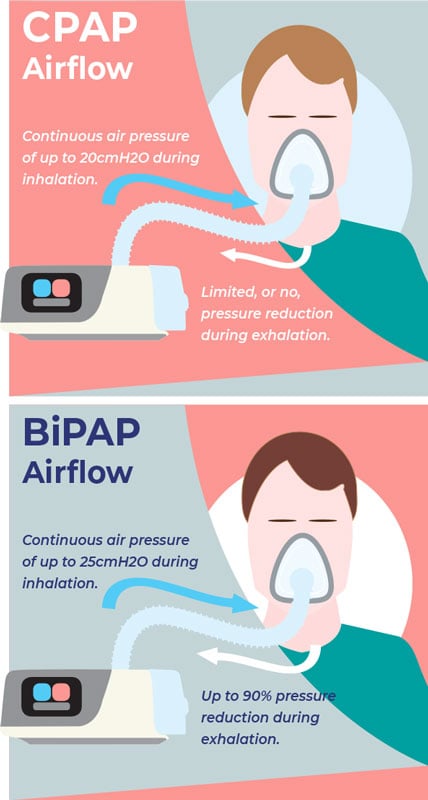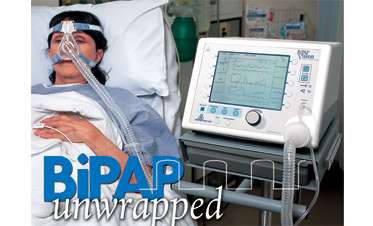BiPAP Rental: A Cost-Effective Alternative to Buying
BiPAP Rental: A Cost-Effective Alternative to Buying
Blog Article
Bipap vs. CPAP: Which Is the Finest for Your Rest Condition?
When browsing the intricacies of sleep disorders, the selection between BiPAP and CPAP therapy is a critical factor to consider. While CPAP offers a steady air flow appropriate for obstructive rest apnea, BiPAP's dual stress setups might boost comfort for those with more intricate respiratory problems.
Comprehending Rest Disorders
Sleep conditions incorporate an array of conditions that interrupt normal rest patterns, impacting both the quality and duration of remainder. These disorders can manifest in numerous kinds, consisting of sleeping disorders, sleep apnea, narcolepsy, troubled leg syndrome, and parasomnias. Each problem offers one-of-a-kind challenges, commonly resulting in substantial daytime fatigue, cognitive disability, and psychological disruptions.
Sleeping disorders is characterized by difficulty dropping or staying asleep, while sleep apnea entails duplicated disturbances in breathing throughout sleep, typically resulting in fragmented rest. Narcolepsy, on the other hand, is marked by extreme daytime drowsiness and sudden rest assaults. Troubled leg syndrome triggers uneasy feelings in the legs, motivating an unmanageable impulse to move them, which can also prevent the ability to go to sleep.
The impact of rest problems prolongs beyond individual health and wellness, affecting total productivity, partnerships, and lifestyle. Understanding the details nature of each problem is vital for effective medical diagnosis and therapy. As sleep wellness ends up being significantly recognized as an important component of general wellness, attending to these disorders is crucial for improving both sleep quality and everyday functioning.
How CPAP Functions
Constant Favorable Respiratory Tract Stress (CPAP) therapy is often employed as a main treatment for obstructive rest apnea (OSA) The system of CPAP includes the usage of a machine that delivers a constant stream of air via a mask worn throughout sleep. This air movement preserves positive stress in the respiratory tract, preventing the collapse or blockage of the throat that can occur during sleep.
When a patient inhales, the CPAP maker provides a continual circulation of air, ensuring that the air passage remains open - BiPAP Rental. This not only minimizes the signs of OSA, such as snoring and disrupted sleep patterns, however additionally lowers the associated health threats, consisting of cardiovascular difficulties and daytime tiredness
The stress setups on a CPAP equipment can be personalized to meet individual client demands, frequently determined through a rest research. Overall, CPAP therapy has actually been shown to significantly boost the top quality of rest and general wellness for individuals suffering from obstructive sleep apnea.
How BiPAP Functions
BiPAP, or Bilevel Positive Respiratory Tract Stress, is a specific form of non-invasive air flow that is particularly valuable for clients with problems such as complicated sleep apnea or breathing disorders. Unlike CPAP, which supplies a constant stream of air at a single pressure, BiPAP supplies two distinctive stress settings: a higher inspiratory pressure for breathing and a reduced expiratory stress for exhalation. This dual-pressure strategy enables easier breathing, decreasing the initiative called for during exhalation.
The device operates through a mask fitted over the nose or mouth, attached to an equipment that generates atmospheric pressure. When the individual breathes in, the equipment delivers the higher pressure to help with air movement, making sure that the air passage continues to be open. Upon exhalation, the maker immediately decreases the pressure, making it extra comfy for the person to breathe out.

Trick Differences Between BiPAP and CPAP

On the other hand, BiPAP (Bilevel Favorable Air passage Stress) offers two different stress settings: one for inhalation and a reduced one for exhalation. This double pressure system allows for more comfortable breathing, particularly for individuals that have problem with exhaling versus a continual stress. BiPAP is typically recommended for patients with complicated sleep apnea, chronic obstructive lung condition (COPD), or those who call for additional assistance throughout rest.
In addition, the intricacy of BiPAP devices typically leads to a greater expense and needs much more careful titration than CPAP. BiPAP Rental. Recognizing these essential differences can aid in recognizing which tool may be preferable for Look At This certain rest conditions, establishing the foundation get more for informed therapy choices
Picking the Right Treatment
Exactly how can one figure out the most appropriate treatment for taking care of rest problems? The choice between BiPAP and CPAP treatment primarily rests on the specific features of the rest disorder, the person's general health and wellness, and their comfort with the tool. CPAP, which provides a continuous stream of air, is commonly suggested for obstructive sleep apnea (OSA) It maintains an open respiratory tract during rest, properly avoiding apneas and hypopneas.
On the other hand, BiPAP provides two levels of stress: one for inhalation and a reduced one for exhalation. This double stress system is valuable for individuals with complex rest apnea or those who experience problem exhaling versus a continuous stress. Additionally, BiPAP is usually recommended for people with respiratory conditions, such as chronic obstructive lung condition (COPD), where varying stress settings can improve comfort and compliance.
Inevitably, a detailed evaluation by a sleep specialist, including a rest research study, can aid identify which therapy straightens best with the individual's needs. Elements such as convenience, ease of usage, and specific clinical problems should additionally be taken into account to maximize treatment results.
Final Thought
In recap, both BiPAP and CPAP offer distinct purposes in the management of sleep problems. CPAP is effective for obstructive rest apnea through consistent air flow, while BiPAP offers twin pressure setups that improve convenience for those with complicated rest apnea or respiratory system problems. The option between these treatments ought to be guided by private requirements and problems, demanding a comprehensive evaluation by a sleep specialist to make certain ideal treatment end results and improved quality of sleep.

On the whole, CPAP treatment has actually been revealed to substantially improve the quality of sleep and total wellness for individuals enduring from obstructive sleep apnea.
BiPAP is typically advised for people with complex rest apnea, persistent obstructive lung disease (COPD), or those who require added support throughout rest.
CPAP is efficient for obstructive rest apnea with constant air flow, while BiPAP provides double pressure settings that enhance convenience for those with complicated rest apnea or respiratory system problems.
Report this page